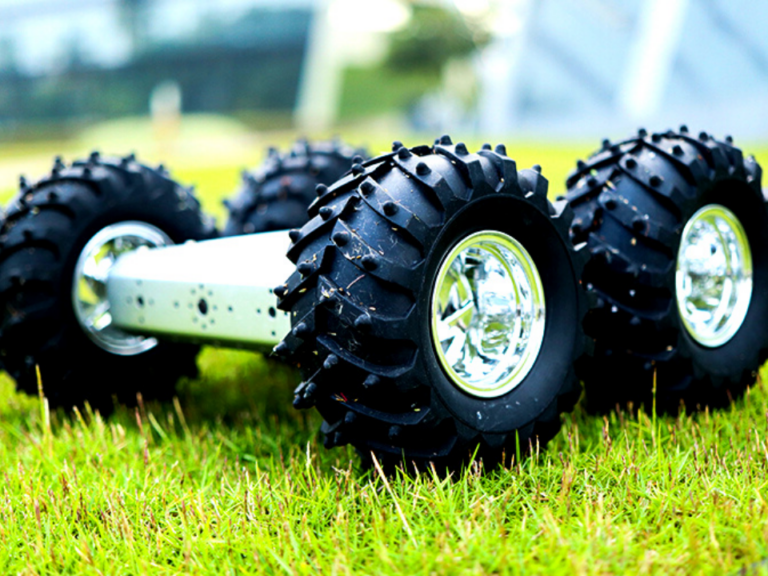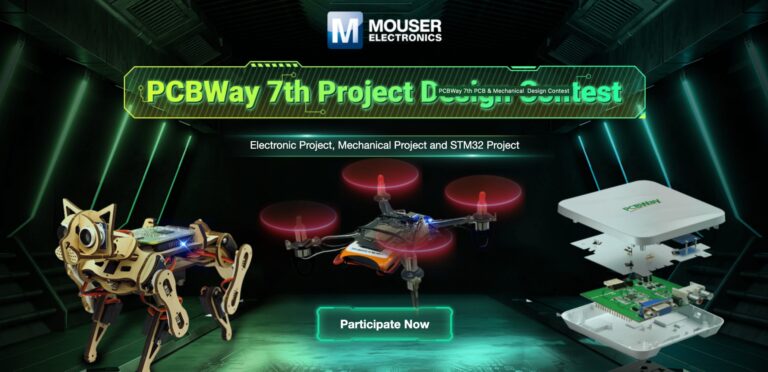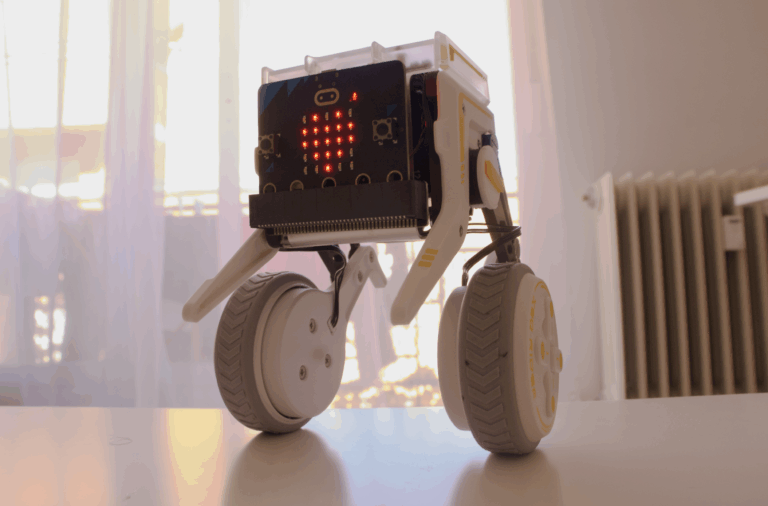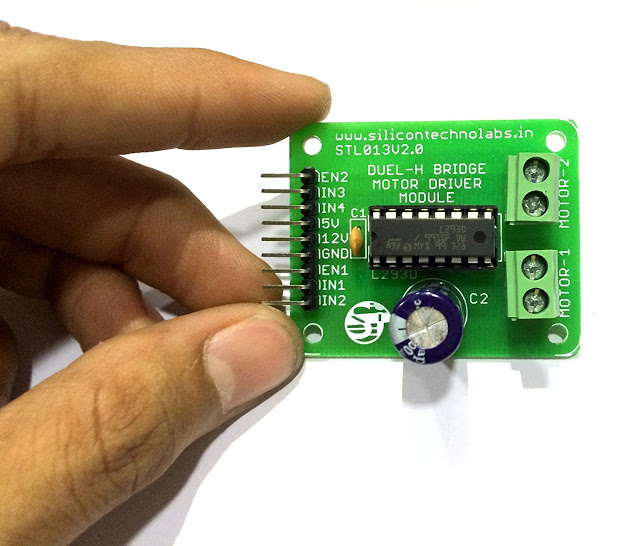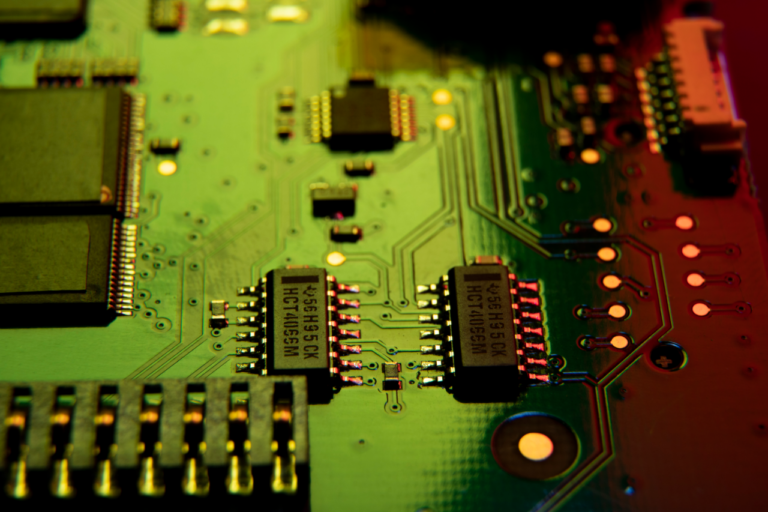Robots Aren’t What You Think: Breaking Down the Myths
Robots often get a reputation shaped by myths and sci-fi fantasies, but the truth behind them is even more interesting! Far from being unstoppable, self-thinking machines, robots are designed to assist humans, not replace us. They excel in specific tasks but still rely on our input for programming, maintenance, and innovation. As robotics technology continues to evolve, it’s clear that the real magic lies in how we use them to enhance our abilities and take on challenges together. So, while robots may not be the all-powerful beings of fiction, they play an exciting and evolving role in shaping our future.

Robots Will Take Over All Human Jobs
One of the most common misconceptions is that robots will completely replace human workers. While robots are engineered to assist and automate specific tasks—especially those that are repetitive, hazardous, or require precision—they lack human qualities such as intuition, creativity, and adaptability. As robots take on routine or dangerous tasks, they free up humans to engage in more complex and strategic roles, including design, oversight, and innovative problem-solving. Additionally, new employment opportunities are emerging in areas like robotics maintenance, programming, and AI training, all of which require human expertise.
Robots Are Intelligent
Robotic intelligence is artificial; robots can only process data and perform tasks they have been explicitly programmed for. The algorithms that guide robots in making decisions or completing tasks do not equate to genuine intelligence or consciousness. Robots operate based on data inputs and predefined logic, lacking self-awareness, understanding, or the capacity for reasoning like humans. Essentially, robots are as “smart” as the engineers and data that underpin their programming.
Robots Have Feelings
Despite advancements in AI that allow robots to simulate emotions through voice modulation, facial expressions, or responses to stimuli, these behaviors are merely programmed responses. Emotions are inherently human experiences grounded in biology. While robots can mimic empathy in roles such as customer service or caregiving, they do not actually experience feelings like living beings do; their “emotions” are just programmed reactions.
All Robots Are Humanoid
Contrary to popular belief, most robots do not resemble humans. A robot’s design is tailored to its specific function. For example, industrial robots often consist of stationary arms meant for welding, assembling, or painting, while service robots may utilize wheels, tracks, or spider-like legs for movement. Only a small fraction of robots, known as humanoid robots, are built to imitate human form, primarily for research in human-robot interaction.
Building Robots Is Only for Expert
Thanks to open-source platforms, user-friendly robotic kits, and comprehensive tutorials, beginners, students, and hobbyists can now construct basic robots. Modern microcontrollers like Arduino and Raspberry Pi facilitate simple and accessible robotics projects that require little to no prior experience. Robotics is increasingly being introduced to younger audiences as a means to cultivate interest in STEM fields.
All Robots Are Expensive
While it’s true that industrial robots and advanced AI systems can be pricey, numerous affordable robotic kits are available for educational and hobbyist use. For instance, basic kits for constructing line-following or obstacle-avoiding robots can be purchased for under $50. The availability of low-cost components for building custom robots has further democratized access to robotics. Additionally, the rise of 3D printing has significantly lowered the cost of producing custom parts.
Robots Are Always Complex
Not all robots are designed for intricate tasks. Some have straightforward designs and functions, such as those used in warehouses for sorting or vacuum robots that simply clean floors. The complexity of a robot often correlates with its intended purpose; many perform simple, repetitive tasks efficiently without the need for elaborate programming or intricate design.
Robots Can Fix Themselves
Although some research is focused on developing robots capable of self-repair—using modular designs or self-healing materials—this is not yet standard practice. Most robots require human intervention for repairs and maintenance. Diagnostic systems can alert humans to issues, but robots typically lack the autonomy or tools needed to physically repair themselves, especially when dealing with mechanical or electrical failures.
Robots Can Think Like Humans
Human cognition is a deeply intricate process that involves emotional, moral, and creative dimensions, which robots cannot replicate. A robot’s “thinking” is confined to processing inputs based on predefined algorithms. Even advanced AI-based robots employed in machine learning are limited to the data on which they were trained. While they may solve specific problems, their capabilities are narrow and task-specific.
Robots Will Take Over the World
This myth has been fueled by science fiction narratives, from “Terminator” to “The Matrix.” In reality, robots are tools created by humans to perform specific tasks. The notion of robots rebelling or seizing control is not feasible, as robots operate according to programming and cannot develop independent goals or desires. Control over robots and AI remains firmly in human hands through regulations, ethical programming, and constant supervision.
Robots Don’t Make Mistakes
While robots are designed for precision, they are not without faults. Malfunctions can occur due to software bugs, hardware failures, or unforeseen environmental conditions. Robots may misinterpret input data or struggle to adapt to changes in their surroundings. In manufacturing, even slight deviations from specifications can lead to significant issues, emphasizing the importance of human oversight and error-checking.
Robots Are Always Faster Than Humans
Robots excel at maintaining high speeds and consistency in tasks that require precision or repetition. However, in situations demanding adaptability, dexterity, or complex decision-making, humans often outperform robots. For example, certain fine motor skills required in surgical procedures or delicate craftsmanship tasks can still be carried out more efficiently by humans.
You Need a PhD to Work in Robotics
While a PhD can open doors to advanced robotics research, the field is increasingly accessible to enthusiasts and professionals without advanced degrees. Many industries seek technicians, software developers, and hardware engineers who can work with robots without necessarily possessing a deep theoretical background. Numerous online courses, certifications, and bootcamps provide hands-on learning opportunities, enabling entry into the field without a PhD.
All Robots Need to Be Programmed from Scratch
Pre-existing software libraries, APIs, and frameworks have simplified the programming of robots, allowing developers to build upon existing code rather than starting anew. Tools like ROS (Robot Operating System) offer a collection of software frameworks and functions that can be integrated into robotic systems, significantly reducing the need for manual coding of every function.
Robots Are Always Made of Metal
Many robots are constructed from a variety of materials tailored to their specific tasks. Lightweight plastics, rubber, carbon fiber, and silicone are frequently used for mobile robots or those requiring flexibility. For instance, soft robotics utilizes elastic materials to create adaptive robots that can grip objects gently, mimicking biological structures.
Only Engineers Can Build Robots
While engineers play a vital role in robot design and development, robotics is a multidisciplinary field that encompasses contributions from computer scientists, artists, designers, psychologists, and even ethicists. For example, creating humanoid robots often involves insights from anatomy specialists to ensure the robots move and communicate effectively with humans.
Robots Can Feel Pain
Pain, as experienced by living beings, is a biological reaction to harmful stimuli. Robots can detect damage or malfunctions through sensors, but they do not “feel” in an emotional or biological sense. A robot might signal the need for repair or shutdown due to an error, but this is purely a functional response, not an emotional one.
Robots Can Instantly Learn New Skills
While AI-powered robots can adapt to new tasks, they require training and programming to do so. Even machine learning algorithms, which enable robots to learn through experience, need substantial data, time, and computational resources to gain proficiency. Robots do not “magically” acquire new skills; they undergo rigorous training processes akin to human learning but focused on specific domains.
Robots Can Solve Any Problem
A robot’s capabilities are limited by its underlying algorithms and hardware. While robots excel in repetitive, rule-based tasks, they struggle with open-ended, creative problem-solving that necessitates intuition and adaptability. For instance, a robot designed for chess cannot bake a cake unless it is reprogrammed or outfitted with entirely different modules designed for that task.
Robots Are Always Futuristic-Looking
Robots are often imagined as sleek, humanoid machines with advanced features, but many are utilitarian and designed specifically for their functions without an emphasis on aesthetics. For example, industrial robots typically consist of large, metallic arms with no attempt to appear futuristic. In contrast, robots intended for consumer interaction, such as robotic pets or humanoid assistants, may adopt more stylized designs to seem approachable.
Robots Can Replace Human Creativity
Creative problem-solving, innovation, and artistic expression are uniquely human traits, deeply tied to emotion and personal experience. While robots can generate music, art, or design using algorithms, the creative process in humans involves factors like inspiration and intuition, which robots cannot replicate. Robots can assist in creative endeavors by automating repetitive tasks or offering new perspectives, but they do not possess creativity in the same way humans do.
All Robots Have AI
Not all robots are equipped with artificial intelligence. Many operate purely based on pre-programmed logic or simple automation routines. For instance, robotic arms in manufacturing plants function through strict programming and do not need AI to operate. AI is typically employed when a robot must interact with dynamic environments or make decisions based on changing data.
Robots Are a Recent Invention
The idea of automata (self-operating machines) stretches back thousands of years. Ancient civilizations constructed mechanical devices that could mimic certain human or animal behaviors. For example, the ancient Greeks created mechanical statues, and the 11th-century Islamic scholar Al-Jazari developed water-powered automatons. However, the modern concept of a robot emerged in the 20th century, particularly with the advent of computers and automation.
All Robots Are Autonomous
Not all robots operate independently; many require human control through remote systems or semi-autonomous setups. Drones, for example, may feature autonomous capabilities like altitude control, yet they often rely on human operators for navigation or mission execution. Telepresence robots allow human operators to remotely control their actions, especially in situations where autonomy is either impractical or undesirable, such as in hazardous environments or during complex surgeries.
Robots Are Perfect
Robots are subject to limitations and imperfections inherent in their design and programming. Factors like hardware wear and tear, environmental conditions, and algorithmic biases can lead to errors or inconsistencies in a robot’s performance. While robots can excel in certain areas, they are not infallible and often require human oversight for quality assurance and troubleshooting.
Robots Are Just Tools
While robots can be considered advanced tools, their impact extends beyond simple utility. Unlike traditional tools, robots can perform tasks autonomously, adapt to new situations, and even collaborate with humans. This ability to operate independently or semi-independently blurs the lines between traditional tools and machines, creating a unique category that requires thoughtful consideration of their ethical and societal implications.
Robots Cannot Work in Groups
Many people assume robots are designed for solitary tasks, but numerous robots can work collaboratively in teams. In industrial settings, for instance, robotic arms often coordinate their actions to optimize assembly lines. Swarm robotics, inspired by social insects like ants or bees, employs groups of simple robots that can achieve complex tasks through cooperation and communication, demonstrating that robots can indeed function effectively as part of a team.
Robots Are Only for Manufacturing
Robots have applications far beyond manufacturing. They play significant roles in healthcare, agriculture, service industries, space exploration, and more. Surgical robots assist in minimally invasive procedures, drones are used in precision agriculture, and robots help in disaster response and recovery efforts. The versatility of robots makes them invaluable across various fields, transforming industries and improving efficiency and safety.
Robots Are Inherently Dangerous
While concerns about robots causing harm are valid—especially regarding autonomous weapons or poorly designed machinery—most robots are designed with safety protocols and fail-safes. In many cases, robots enhance safety by performing hazardous tasks that would otherwise expose humans to danger, such as bomb disposal, hazardous material handling, or search and rescue operations in unstable environments. Proper design and regulation can mitigate risks associated with robotic technology.
Robots Have a Mind of Their Own
The perception that robots can operate independently and develop their own intentions is misleading. Robots follow programmed instructions and algorithms created by humans. While some may exhibit behavior that seems autonomous, such as adjusting to new data inputs, this is simply the result of complex programming. The lack of self-awareness or consciousness means robots cannot act outside the scope of their designed functionalities.
Robots Are Only for Tech Companies
Although technology companies are heavily involved in robotics development, individuals, educational institutions, and hobbyists also contribute significantly to the field. Robotics competitions, maker fairs, and online communities foster innovation from diverse backgrounds, encouraging everyone—from students to enthusiasts—to engage in robotic design and development. This democratization of robotics has led to a broader range of ideas and applications.
Robots Can Work Without Maintenance
Like all machinery, robots require regular maintenance to ensure optimal performance and longevity. Routine checks, software updates, and component replacements are essential to keep robots functioning correctly. Neglecting maintenance can lead to malfunctions, decreased efficiency, or even safety hazards, making ongoing care a crucial aspect of robotic operation.
Robots Will Eventually Dominate Human Society
While concerns about automation and job displacement are valid, the future is more likely to involve collaboration between humans and robots. Rather than domination, the integration of robots into society is expected to enhance human capabilities and create new opportunities for work and innovation. The focus should be on how to leverage robotic technology responsibly and ethically to improve quality of life and productivity.
Robots Can Make Ethical Decisions
Although some AI systems can simulate ethical reasoning based on predefined criteria, they lack genuine moral understanding. Robots do not possess values or ethics; they can only execute decisions based on programming or algorithms. Ethical decision-making often requires contextual understanding and human empathy, qualities that robots cannot replicate. The responsibility for ethical choices in robotic applications ultimately rests with humans.
Robots Will Make Us Lazy
While robots can take over certain tasks, they also have the potential to improve efficiency, safety, and quality of life. By automating mundane or dangerous tasks, robots allow humans to focus on more creative, strategic, or fulfilling activities. Rather than promoting laziness, the effective use of robots can lead to enhanced productivity and innovation in various fields.
All Robots Are Electrical
While most modern robots are powered by electricity, robots can also utilize alternative power sources. For instance, pneumatic robots operate using compressed air, while hydraulic robots use fluids to transmit power. Some robots may even be designed to harness solar energy or incorporate bio-inspired designs that mimic natural energy sources, demonstrating that robotics is not limited to electrical engineering.
Robots Can Completely Replace Human Interaction
Although robots can perform tasks that involve interaction, such as customer service or companionship, they cannot replicate the depth of human connections. Genuine relationships are built on shared experiences, empathy, and emotional understanding—qualities that robots do not possess. While robots can enhance interactions in certain contexts, they should not be seen as substitutes for human relationships.
Robots Are All the Same
The diversity in robotic designs and functionalities is vast, with different robots tailored to specific tasks and environments. From industrial robots and drones to humanoid robots and robotic pets, the field encompasses a broad spectrum of technologies. Each type of robot serves distinct purposes, reflecting the specific requirements and challenges of its intended application.
Robotics Is Only for Scientists
Robotics is a multidisciplinary field that welcomes contributions from individuals with diverse backgrounds. Artists, designers, educators, and even business professionals can engage in robotics. The field is becoming more inclusive, with educational programs and initiatives encouraging people from various disciplines to explore robotics and contribute to its advancement.
Robots Are a Threat to Humanity
The notion that robots pose an existential threat to humanity is often sensationalized in media and fiction. While there are valid concerns regarding AI ethics, safety, and job displacement, the real focus should be on responsible development, regulation, and integration of robotic technologies. By fostering collaboration and ethical considerations, society can harness the benefits of robotics while addressing potential challenges.
While robotics development and initial investment can be costly, the price of robots has been steadily decreasing as technology advances and production scales up. Additionally, many open-source projects and DIY robotics kits make it possible for hobbyists, students, and small businesses to create their own robots without a significant financial burden. This trend is likely to continue, making robotics more accessible to a broader audience over time.
Robots Have No Emotions
Robots do not experience emotions the way humans do. Although some robots are designed to simulate emotional responses, such as facial expressions or tone of voice, this is purely for interaction purposes and does not reflect any internal emotional state. Emotional simulation in robots is often used in social robotics to create more natural and engaging experiences, but it does not equate to true emotional awareness or empathy.
Robots Are Replacing Engineers and Scientists
Rather than replacing engineers and scientists, robots and AI are tools that help professionals in these fields to be more productive and efficient. Robotics development requires collaboration between various experts, including engineers, software developers, and data scientists. Robots assist with repetitive, dangerous, or precision tasks, allowing human engineers to focus on innovation, design, and solving complex problems.
Robots Can Solve All Problems
While robots can assist in solving specific tasks, they are not a cure-all solution. Robots are designed to address particular challenges, such as performing repetitive tasks or operating in hazardous environments, but they cannot independently solve complex, multifaceted problems that require human creativity, critical thinking, and empathy. Collaboration between robots and humans is essential for addressing the world’s most pressing issues.
Robots Will Take Over Every Job
Robots are expected to automate certain types of jobs, especially those that are repetitive or dangerous. However, many jobs require complex decision-making, creativity, and interpersonal skills—areas where robots cannot replace humans. The introduction of robots into the workforce often leads to job transformation rather than complete replacement, with new roles emerging to manage, maintain, and innovate with robotic systems. Additionally, robots can relieve workers from hazardous or monotonous tasks, allowing them to focus on more meaningful work.
Robots Are Immortal Machines
While robots can often function for extended periods with maintenance and repairs, they are not immune to wear and tear. Components degrade, software can become outdated, and technologies can become obsolete. Just like any other machine, robots require upkeep and eventually reach the end of their operational lifespan, necessitating upgrades or replacements.
All Robots Use Artificial Intelligence
Not all robots are powered by AI. Some robots perform simple tasks based on pre-programmed instructions without needing any form of advanced decision-making or learning capabilities. AI-enhanced robots, however, are equipped with machine learning algorithms and other advanced technologies, enabling them to adapt and improve their performance over time. The distinction between basic robots and AI-enhanced robots is important in understanding their respective capabilities.
Robots Are Just a Fad
The advancements in robotics over the past few decades show that robots are far more than a passing trend. With applications spanning from healthcare to agriculture and beyond, robotics is becoming an integral part of modern industry and society. Continued innovation in AI, materials science, and other technologies ensures that robotics will remain a key area of technological growth and development in the future.
Building Robots Requires Advanced Programming Skills
Although building advanced robots may require specialized programming knowledge, there are many beginner-friendly robotics platforms available that do not require expert-level coding skills. Platforms like Arduino, LEGO Mindstorms, and VEX Robotics offer intuitive tools and educational resources that allow people with little to no programming experience to start building and programming robots. This democratization of robotics encourages wider participation and fosters innovation from individuals of all skill levels.
Robots Are Only for Industrial and Scientific Use
Robots have become increasingly common in everyday life, from household cleaning robots (like Roomba) to entertainment robots, educational kits, and social robots designed to assist the elderly or people with disabilities. The range of applications for robotics continues to grow, reflecting their versatility in both industrial and personal contexts. As technology advances, robots are likely to become even more integrated into daily life, enhancing convenience, safety, and quality of life for individuals.
PCBWay
When building robots, having high-quality circuit boards is crucial for making sure everything runs smoothly, and that’s where PCBWay comes in. PCBWay is known for offering top-notch printed circuit board (PCB) manufacturing and prototyping services, which are essential in robotics projects. Whether you’re working on a simple robot or a complex system with multiple sensors and motors, PCBWay helps you create reliable, custom-designed boards to fit your needs.

Plus, their quick turnaround and affordable prices make them a favorite among hobbyists and professionals alike. If you’re into robotics, PCBWay can definitely help bring your ideas to life!
PCBWay’s 7th Design Contest invites innovators and electronics enthusiasts to showcase their creativity and technical skills, offering exciting prizes for the best PCB designs.
Conclusion
When people think about robots, they often imagine futuristic machines from movies that can do just about anything. However, the reality of robotics is a bit more grounded, and there are plenty of misconceptions out there. From fears of robots taking over the world to ideas that they can think like humans or fix themselves, these myths shape how we view robots today. Let’s break down some of the most common myths about robotics and uncover the truth behind these fascinating machines!

